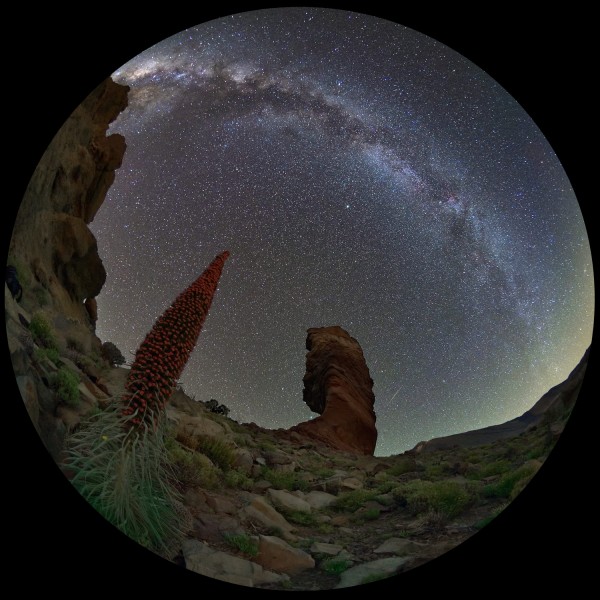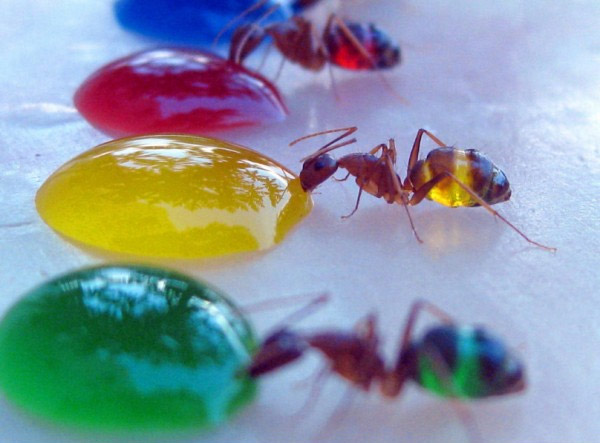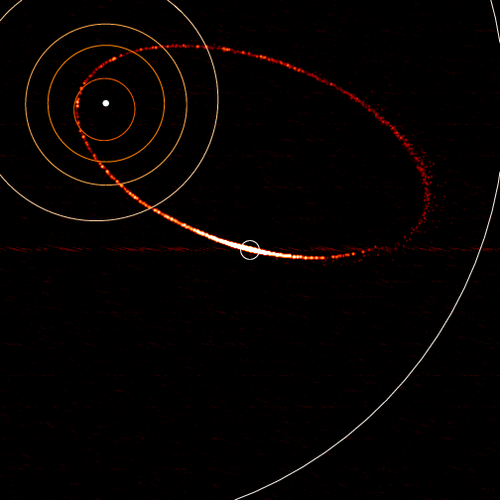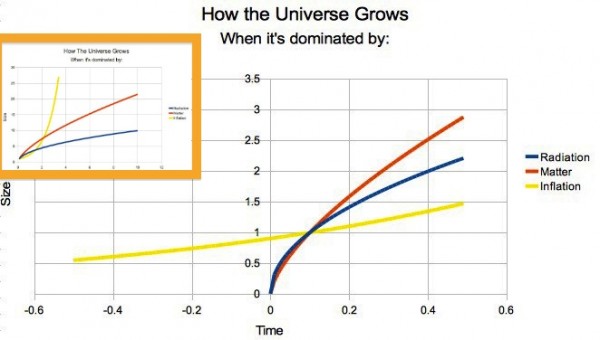"To see a world in a grain of sand and heaven in a wild flower
Hold infinity in the palms of your hand and eternity in an hour." -William Blake
Another week is behind us here at Starts With A Bang, and not only has the Universe been particularly kind to us, but you've had plenty to talk about. Over the past week, here's what we've talked about:
- The Earth's Motion through the Galaxy (for Ask Ethan),
- Funny (colored) honey (for our Weekend Diversion),
- The unusual galaxy Messier 90 (for Messier Monday),
- The Birth of a Meteor Shower,
- How did the Universe begin?, and
- The Big Bang's Last Great Prediction (for Throwback Thursday).
With a wide range of things to address, what did you choose to ask/comment about? Without further ado, here are your Comments of the Week!
Image credit: Rhys Taylor of http://www.rhysy.net/.
From JScarry on the subject of the Earth's motion: "The movement through space is one of the things that has always bugged me about time travel. Assume that you could go forward or backward in time. Unless you could also calculate precisely where the earth would be in space you’d end up in interstellar space."
This is actually a much bigger problem for practical considerations of time travel than most people realize. Normally, we travel through time the same way we travel through space: continuously. You don't have to worry about things teleporting large distances from one location to another, or things randomly disappearing one moment and reappearing the next. But because space and time are relative, meaning that what you perceive as a distance or a duration depends on your frame of reference, if you were to travel discontinuously in time (i.e., time travel), the odds that you'd end up in what you consider to be the same spatial place are astronomically tiny.
But it's even worse than the fact that the Earth orbits the Sun, the Sun orbits the galaxy and the galaxy moves through space.
 Image credit: Patrick Len of http://waiferx.blogspot.com/2012/07/presentation-big-bang-clues.html.
Image credit: Patrick Len of http://waiferx.blogspot.com/2012/07/presentation-big-bang-clues.html.
Because on top of all of that, our Universe is continuously expanding, so that there's no good way to "smoothly" jump through time. If there were such a thing as absolute space or absolute time, this would be a different story, but as it stands, if you want to travel through time, you need to specify all four coordinates -- three spatial and one temporal -- incredibly precisely, or you're certain to arrive at a place either in the depths of empty space or the interior of a massive body. You won't last long even if you make a tiny error!
From Wayne Robinson on the topic of Funny Honey: "I went to Friedrichshafen in Germany many years ago, and I was fascinated by a jelly bean machine which a storekeeper had outside his store. I doubt that he was selling many jelly beans, because bees from a neighbouring hive had somehow worked out how to get into the machine. And were consuming the jelly beans (there were a large number of half eaten beans on the top)."
It isn't just bees, mind you; a great many insects will devour whatever sugary substance -- even if the liquid content is small -- that they can find.
For some reason, it's simply captivating to see the surreal ways our food dyes wind up propagating back into the natural world!
Image credit: Robert Gendler, via sky-map.org at http://server3.sky-map.org/starview?object_type=2&object_id=6333&locale….
From Peter on our most recent Messier Monday: "Thanks so much for another MM, not sure what I will do when the series ends, its got me back out in the garden with the scope having loads of fun. Especially the M82 supernova, wow!"
To be honest, Peter, I'm not entirely sure what I'm going to do when that time comes, either! There are a huge number of options I'm considering, including starting a new series about scientists, phenomena or discoveries, doing a 6-month series going through each one of the alphabetical entries from the astro alphabet, or something else entirely. One thing's for sure: I know the night sky -- and the best astrophotographers out there -- a lot better now than I did before I began the series!
From Mike Dicker on the birth of a meteor shower: "So the comet’s path was altered by Jupiter’s gravity in 2012. I get that. But Jupiter would only be able to affect a small piece of the debris field’s elliptical orbit, as very little of that debris field would have been in close proximity at the time of the comet’s pass. So, while I can understand how Earth might pass close enough to the comet’s new orbit, I fail to see how that has any bearing on Earth’s first encounter with the debris field left behind from previous centuries."
There was a partial answer provided by ARaybold, but let's give this a more full treatment. Take a look at the diagram above: that's the "dust trail" from Comet Encke, the shortest period comet in our Solar System and the second periodic comet to be classified as such, after Halley's. Notice how one part of the dust trail is denser than all the others? That's actually centered on the comet's nucleus. Over time, that trail will get extended out farther and farther, becoming more uniform. For Comet 209P/Linear, the 2012 gravitational encounter not only perturbed the orbit of the comet, bringing it close to Earth, but also of the dust trail that was nearby.
 Image credit: Stephane Vetter of http://www.nuitsacrees.fr/.
Image credit: Stephane Vetter of http://www.nuitsacrees.fr/.
The meteor shower, unfortunately, was a bust, telling us that there isn't all that much of a dust trail likely to be associated with the Camelopardalids; it's likely to be more akin to the unremarkable Lyrids than the spectacular Perseids.
Above is the first picture from the new shower I've been able to uncover; a pretty nice composition, even with just one meteor trail, no?
Image credit: cyclic universe via http://universe-review.ca/F02-cosmicbg10.htm.
From Sinisa Lazarek on how the Universe began: "Excellent post. I’ve been bitchin’ a bit about past couple of articles. But this one is spotless. This IS the current summary of modern Cosmology. And is precise, detailed and philosophical at the same time. 5 stars all the way."
Well, I'm glad you liked it! It was a hard one to write, but I'm glad you found it interesting and of high quality.
Now maybe you (or someone) can go edit Wikipedia's article on cosmic inflation to reflect the fact that it came before the Big Bang, not after, and we can work on correcting this gross misconception that's more than 30 years out-of-date.
From Juice on the same topic: "So what’s confusing me is that in the beginning of the article you say that the big big isn’t where time began, but later you have a plot that has an x-axis with t=0 and stuff happening before t=0. I suppose you’re marking t=0 as the time when the big bang happened, but when the big bang happened can’t be t=0. I see that you put it in quotes, but then you don’t really explain what you mean."
The whole problem is that if you only considered matter, radiation, and other stuff that gets less dense as the Universe expands -- which is what we considered as making up the Universe for most of the 20th century -- then we would have had a singularity at the time t=0. That's what the "matter" and "radiation" curves show, above, and that's where the concept of t=0 comes from.
But what if you had inflation? What if you had energy intrinsic to space itself dominating your Universe? As you can see, the scale factor (what I call "size" above) never drops to zero, not at any time. That is the whole point of why the old idea of a "t=0 is the Big Bang" needs to die: that concept is already known to be physically irrelevant for our Universe.
Image credit: Illustris Simulation, M. Vogelsberger, S. Genel, V. Springel, P. Torrey, D. Sijacki, D. Xu, G. Snyder, S. Bird, D. Nelson, L. Hernquist, via http://h-its.org/english/press/pressreleases.php?we_objectID=1080.
And finally, from Bertrand Ducharme on the Big Bang's last great prediction: "The Big Bang is not a theory. It is a model. It is a model periodically revamped to take into account new data and new concepts. New concepts like dark matter and dark energy. New concepts which scholarly express our ignorance of the main composition of the universe. What about some modesty here!?!"
First off, the Big Bang is a lot of things. It is a theory, it is also a model, but perhaps most accurately, it is a framework that we can choose to work within, as a very particular class of solutions in General Relativity. Do you have an expanding, cooling Universe that is isotropic and homogeneous on large scales? Do you have matter and/or radiation present in that Universe? Did you begin from a hot, dense state? Then you can describe the Universe by using the Friedmann-Lemaitre-Robertson-Walker metric, and extrapolate back to a set of initial conditions that are well-described by the Big Bang.
![Image credit: Yi Wang of arXiv:1303.1523 [hep-th], via https://inspirehep.net/record/1222779/plots.](/files/startswithabang/files/2014/05/fig_horizon_problem_inflation_simp-600x377.png) Image credit: Yi Wang of arXiv:1303.1523 [hep-th], via https://inspirehep.net/record/1222779/plots.
Image credit: Yi Wang of arXiv:1303.1523 [hep-th], via https://inspirehep.net/record/1222779/plots.
Getting indignant that the Big Bang -- which can admit things like dark matter, dark energy, pressureless dust, homogeneous fluids, cosmic strings, domain walls, magnetic monopoles, cosmic textures, massive-or-massless neutrinos, and many other things -- doesn't predict which of those constituents is present (and in what ratio) in our Universe is as absurd as complaining that evolution doesn't predict DNA, that integers can't describe π, or that economics can't predict the limits of human greed and avarice. Your call for modesty is a call to sow doubt where legitimate confidence is present, and I'm not falling for it. There may someday come along a better description of the Universe than the Big Bang can present -- just like modern biology has superseded Darwinian evolution -- but that won't make the Big Bang wrong, just a good approximation that breaks down outside its range of validity. One could perhaps more legitimately argue that the Big Bang has already evolved to include exactly that.
But being honest about the limits of our knowledge and the assumptions under which our scientific truths are based is not the same as giving false weight to demonstrably invalid alternatives. And that will wrap up this edition of Comments of the Week; thanks for weighing in and joining me!
- Log in to post comments





"... and we can work on correcting this gross misconception that’s more than 30 years out-of-date."
I agree wholeheartedly. But here is the problem. I checked Wiki's BB article just now. This is the image that sits right beside Chapter 1: Singularity
http://en.wikipedia.org/wiki/File:History_of_the_Universe.svg
now this image has been uploaded just 2 months ago. And has been created by BICEP/KECK group. Credits.. NSF, NASA, JPL etc etc.. And it's wrong. They took the existing wrong image and just added a top part to represent Bmodes.
Now I'll come along and say ok, this is really wrong, here is the correct picture and text. And the jury will vote, on one side we have this unknown dude claiming NSF/NASA's image is wrong.. ROFL!!! I'm sure you understand the issue.
This should be done from top to bottom, not vice versa. Because from bottom to top doesn't work. Everyone can edit an article, but in this case I doubt it will pass peer review. It's the physicists on TV and in shows who have to stop saying Big Bang.. from single point.. everything. Because the fine print "visible universe" is often too fine to read ;)